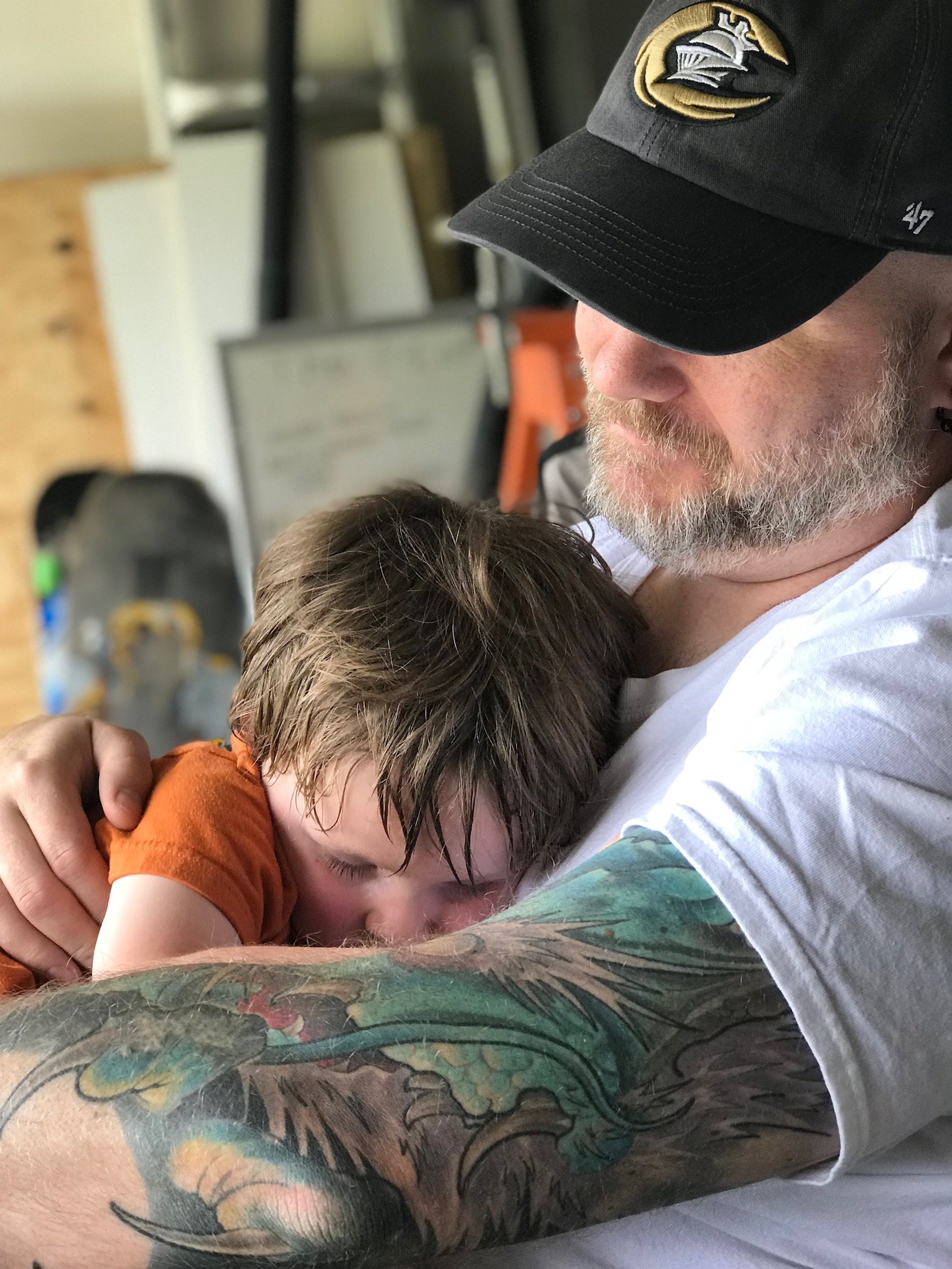My question is once this procedure has been completed and say the person really got into some heavy cardio and thus were burning a lot of fat would the body be able to burn the fat that was moved to the buttocks or does it not have the associated blood vessels to enable this?
I’m not even sure if that’s how lipids are metabolised, but I assume it’s through the blood.
Hi. I’m not a doctor, but I can opine as a biologist.
The transplanted cells have blood vessels, because all cells need a supply of oxygen to avoid expiring. If they didn’t have a supply of blood, they’d quickly turn necrotic.
When you deplete your short term energy stores, the body converts fat molecules within fat cells into sugar, then shuttles those through the body in the blood stream.
The body doesn’t draw on fat stores within the body in a totally even way, so I don’t know how quickly it would draw from the transplanted cells, but it works presumably still burn fat from these cells when needed.
And the reverse is true as well: when excess sugar is available, the body would generate new fat molecules to fill those cells, and if necessary make new fat cells as well.
Thanks.
I feel a little stupid now, as it’s obvious that it would die if it didn’t have a blood supply.
So when they’re transplanted they’re going to connect some blood vessels. I am not understanding how the cells are still able to know when to turn fat into glucose, but again I’ll assume it’s done through the blood with an enzyme or something.
I think you’ve answered the main question though showing it can use those stores. Much appreciated.
Fat is usually stored in the body in the form of triglycerids. When fat is used, it’s usually not turned into glucose, but rather into fatty acids, that are then released in the blood and reach the cells that need extra energy, where they are used by the mitochondria to power said cells. The signaling that triggers this is in fact done by a bunch of hormones that do indeed circulate in the blood to reach the cells specialized in storing fat, called adipocytes.
Depending of what triggers the transformation of fat into fatty acids( a process called lipolysis), those hormones could be insulin, epinephrin, growth hormone, etc.
What about ketosis? Are ketones a legit way to remove fat?
Yes, ketone bodies are the result of the beta-oxydation of the fatty acids in triglycerides. It’s the way the body breaks down fat into molecules that it can either burn or tranform into other molecules like sugars.
The Atkins and ketogenic diets are legit, but they can be risky and you can harm your body (like your kidneys) without professional guidance. And you can also bounce back to your original weight afterwards, which is something I find fascinating.
I wonder if the bounce back is the body trying to find homeostasis… of sorts. I’ve gone hiking for a week and come back having lost 10 lbs. A month later I’ve gained it back. I know it’s your diet, but gaining it that fast can’t be normal.
Probably at least half of it is water weight, so it might be pretty close to the recommended pound per week
You know, I’ve wondered that myself! It’s mind-blowing to me when people say they’re back at where they started. So I suspect it has to be at the genetic level to keep you at a certain weight. Here’s a talk by Dr. Giles Yeo (neuroendocrinologist) making the case for it. (Main point starts at 5 min mark)
And you can also bounce back to your original weight afterwards, which is something I find fascinating.
There are some working theories (with some amount, but not enough yet of good science) this has to do with your gut microbiome. Since these bacteria are a critical (and still largely unknown) link in not only our digestion, hormone response, nutrient absorption, and immune/inflammatory response.
In essence, a particular set of gut bacteria are good at breaking down certain types of food in certain quantities, and they’ll tell your body to keep giving that type food and quantity. So unless that’s changed with longer term dietary changes, you’ll return to your previous state because thats what your gut is telling you to eat keeping your original cycle.
Oh wow, interesting, and seems reasonable.
Any links to even mediocre science on this? Or anythung suggestive?
I wouldn’t call it mediocre science, just the area of research needs more attention before its cemented as a complete theory with actionable paths.
Here’s a primer one some of the foundational ideas from the American Society for Microbiology.
I very much appreciate you were doing an ELI5 answer for this, so forgive my if I’m dissecting this too closely.
When you deplete your short term energy stores, the body converts fat molecules within fat cells into sugar, then shuttles those through the body in the blood stream.
Your body uses up all sugar in the blood (glucose), then exhausts short term energy stores including Glycogen in your muscles and liver next. At that point (given enough time and no re-introduction of glucose from eating), doesn’t your body go into Ketosis? So your liver would be taking fat from your body and converting it to Ketones to power your brain and body. I didn’t think Ketones were a sugar.
Alternatively, if you don’t burn through all your body’s glucose, your body can use some glucose and some fat to produce energy when operating with enough oxygen (aerobic).
Do I have that right?
doesn’t your body go into Ketosis?
Yes, ketosis happens within a few days of limiting sugar intake.
I didn’t think Ketones were a sugar.
You’re right, they’re very different molecules. Ketone bodies can be converted into sugars by the enzymes in the liver if your body needs them, but they’re not sugars themselves.
Honestly, I don’t recall the details. What I shared was my best recollection. I think what you said sounds reasonable, but I can’t reliably say.
I have no knowledge of Brazilian Butt Lifts specifically, but here is some related information about how fat works in general, which I hope is a good starting point:
Fat cells don’t die easily. They just shrink. See: https://news.yale.edu/2015/03/02/study-new-fat-cells-are-created-quickly-dieting-cant-eliminate-them
When performing skin grafts, fat cells retain the characteristics of the original skin location. For example, here is a paper that shows a soldier who had a skin graft from his stomach to his hand, and later developed a kind of “beer gut” on his hand. Content warning: graphic images of open surgery in related articles section if you scroll down. If you are even a little squeamish, do not scroll down. https://journals.lww.com/dermatologicsurgery/citation/2006/03000/does_transferred_fat_retain_properties_of_its_site.12.aspx
That’s fascinating, thanks for the information.
I suppose a hand doesn’t naturally have much fat in it, so using fat to bulk it out can have odd side effects.
This will be a good read. Thanks for sharing.
I really should do some work now but I’ll read those later.
I can’t answer the question directly, but this may be related.
Back in the 90s when the cable channel TLC wasn’t shit, they had a series showing actual surgical procedures. I watched one where a woman had previously had a mastectomy, and this follow up was essentially rebuilding her breast by moving fat from her belly into her chest.
It’s not just cutting out one lump of fat and putting it somewhere else. The blood supply had to be kept intact, so it was more like a slide puzzle. Lots of stuff moved only as far as it could without interrupting the various veins and arteries.
Interestingly, they made sure to point out that the fat being shifted around still thinks it’s belly fat, so gaining and losing weight that would normally affect the belly would show up in the one reconstructed breast
Presumably this other procedure is similar. Fat is moved from the legs in such a way that by moving a relatively small amount, the butt gets bigger and the legs get smaller, making the butt look even bigger by comparison.
Thanks.
This was very informative and you’ve actually answered some of the other questions I had which I asked in a few replies.
The fact that whatever you move is still designated as belly fat or waist fat etc. I was curious about how it would affect the burning of fat, particularly the cells chosen, and placement of new fat.
Awesome. Thanks again.
I don’t have any answer for you but I’m curious if you are considering one
Haha nope.
I’m a guy, not saying they can’t do it. It’s really not my thing all this beauty stuff.
I was just watching a video on the impact of Instagram and it had a bit on these and other stuff like lip filler.
TL;DR is yes, but typically slowly. So the BBL won’t last forever but for most people it can last quite a while.
I have seen claims from 5-10 years. But it will depend on your lifestyle. I have seen some sites saying that if your weight is fluctuating it will dissipate faster than if you keep a fairly stable amount of body fat.
If they didn’t have blood supply they’d start rotting.
And yes if you burn fat via cardio or whatever, it will pull from anywhere in the body. Your expensive procedure just went up in smoke.
Thanks.
Yeah as soon as I read the same in another person comment about the blood and death I felt like a dumb dumb as it’s obvious.
The fat cells behave the same as before they were transferred. The number of fat cells mostly stays the same when you lose weight, just depleting the fat reserves within the them. So yeah, you’d mostly re-gain it in the same cells.
Thanks.
As a follow up. With fat burning being random is that random to us as we can’t control it, but the body does know in what order it will do things.
If the latter does that mean if it was your waist next and that was moved to you bum, would it still be those cells next.
IANAD, but it’s my understanding that how people store and lose fat is unique to their biology. That said, it makes sense (to me) that one of two things would happen:
- They burn more fat in the area they augmented (ie their butt), because they didn’t have a lot to there begin with
- They gain/burn their fat faster elsewhere in their body, leaving their butt safe for a while
I do not have any proof to back that up, other than my own personal experience with my body.
Thanks.
Number 1 is an interesting point and I asked something similar to another reply.
I wondered if the say the body already knows which fat cell is next to be burned, like a map. Then say if the waist was next but that was moved to the butt would it still be waist or now butt.
Your question is also interesting in that should there be a given amount of fat in each region and will the body fight for equilibrium again.
I would imagine that if the body is not used to burning fat in a specific area, it would probably continue not burning fat in that area, until it had no choice but to burn there.









